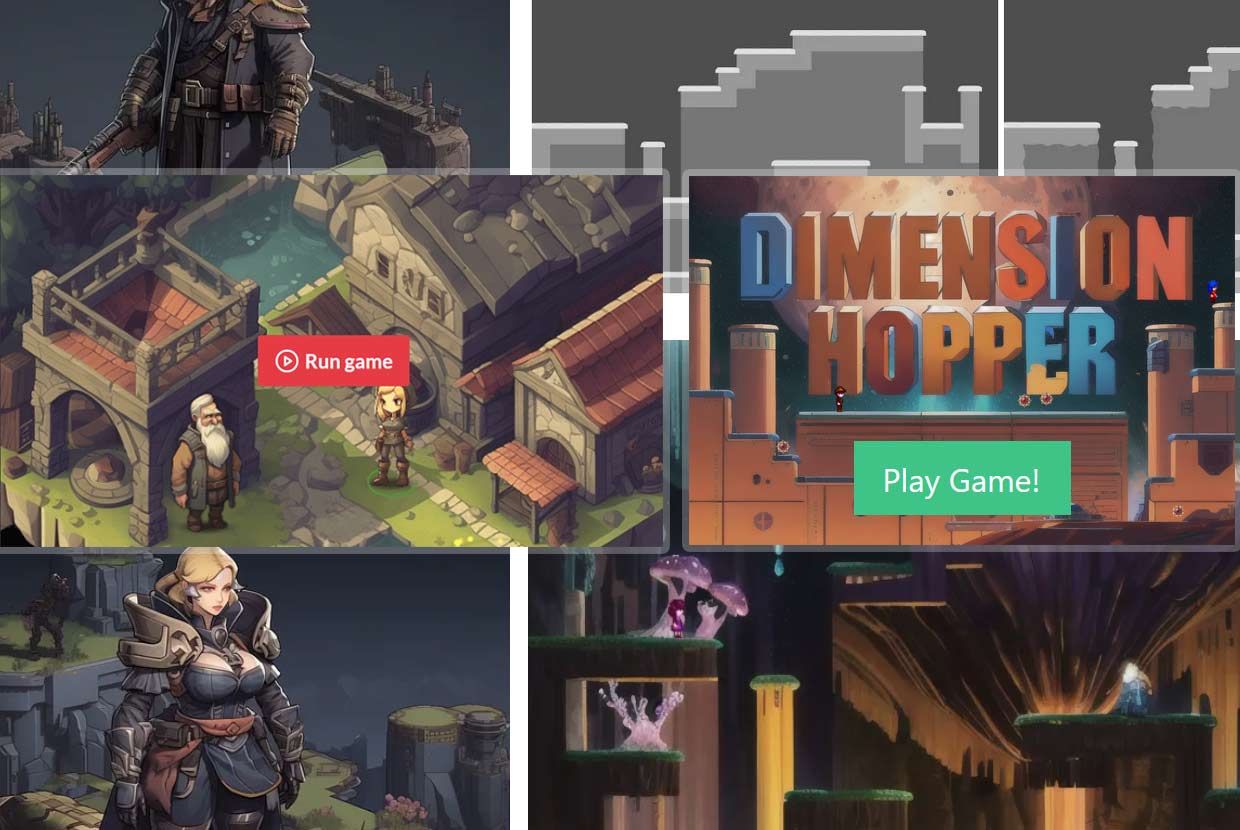Generated Adventure
The first story is about a game called “Generated Adventure” that was made during the Ludum Dare 53 game jam. The game involves all the generative systems that the developers could find. The art, story, dialogues, characters, and locations were all generated. The developers used Stable Diffusion and Midjourney as sources of inspiration for designing in-game objects.
They also used chatGPT to make tutorial texts more comprehensive, concise, and easy to understand. They asked the system to rewrite the tutorial text in the ELI5 (a.k.a. ‘explain to me like I am five years old’) format. A few times they generated descriptions for their games with chatGPT, mixed them with human-made versions and bought some ads to check which one would prove to be more attractive. Sometimes chatGPT’s texts performed better, sometimes they did not.
The developers generated the whole game using AI-based systems except for the game engine which was Defold. Because it’s super lightweight and web-ready which is important for the Ludum Dare rating system (everyone can easily play the web game and rate it, but not everyone is ready to download executable files, and launch it). They used Stable Diffusion and Midjourney to generate something beautiful but tuning and maintaining a consistent style of dozens of tiny elements can consume a lot of time. That’s why they started experimenting with concepts that would work in a limited number of locations, one big generated picture per location. Isometric flying “islands”, as seen in Into the Breach, looked like a perfect fit.
They expected to spend 50%+ of 72 hours on fixing “unexpected” issues brought by the generative systems so they decided to pick a genre that wouldn’t take long to assemble into something playable. A point-and-click adventure like Monkey Island looked quite simple to implement and it looked like a good fit with “island” based level design.
Dimension Hopper
The second story is about experience of creating a 2D platformer game using Stable Diffusion, a generative AI tool that can create realistic images from sketches or prompts. Developer explains how he used control-net, a feature that allows more control over the output, to generate different themes and environments for the game levels. He shows some examples of the game graphics and the challenges he faced in making them look natural and consistent. He also provides a link to his game website, where people can play with it and see what it looks like.
